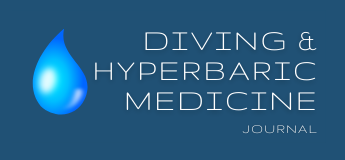Tables must not be embedded in the main manuscript document. They are to be uploaded as separate Word documents (one document per table) in Manuscript Manager (use the ‘other’ category when asked to select a description of the document being uploaded). Name the document with the first author’s name and table number as appropriate. Tables need to be labelled at the top of the page with first author name and the Table number.
Tables should be presented using MS Word table format with frames shown, auto-formatted to fit content. Please avoid complicated, large tables whenever possible. Very large tables (full page or more) may not be incorporated into the final article but, rather, displayed in the journal website as additional material at the Editor’s discretion.
The title of the table and caption are not to be included in the table. These appear in the ‘legends and captions’ section at the end of the manuscript document. Legends should generally contain fewer than 40 words and should be thorough enough to be understood independently of the main text.
The table must be mentioned within the text of the article, e.g., “Differences in rates of decompression illness were not significant (Table 1)”, etc. The approximate positions of tables and figures should also be identified in the manuscript text.
Figures (including photos, graphs, diagrams, illustrations and radiographs) must not be embedded in the main manuscript document. They are to be uploaded as separate electronic files in high resolution preferably TIF but DHM accepts JPEG format in Manuscript Manager. Name the document with the first author’s name and figure number as appropriate. Figures should be uploaded to Manuscript Manager in their numbered order, which results in them being compiled in the review document in correct order.
The title of the figure and caption are not to be included in the figure. These appear in the ‘legends and captions’ section at the end of the manuscript document. Legends should generally contain fewer than 40 words and should be thorough enough to be understood independently of the main text. Magnification should be indicated in the captions for photomicrographs, and consideration given to the positioning of labels on diagnostic material as this can greatly influence the size of reproduction that can be achieved in the published article.
Graphs may be submitted either in colour or grey-scale, with no unnecessary shading, grid lines or box lines. Please choose the simplest graphical format that displays the data effectively. 3-D graphs are discouraged unless they are necessary to display 3-D data. Both markers and lines should be unique to facilitate easy discrimination of the data being presented. Special attention should be given to ensuring that font sizes within a diagram are sufficiently large to be legible should the diagram be sized for single-column presentation. The preferred font in diagrams and graphs is Times New Roman. Graph symbol keys should appear within the white space of the figure (not outside the axes) if possible or be included in the legend. Please ensure that axes are labelled using sentence case and the same data formatting conventions presented below.
Any graphs or histograms created in Excel should be sent within their original Excel file, including the data table(s) from which they were produced. This allows the journal office to edit figures for maximum legibility when printed. Upload the spreadsheet to Manuscript Manager with the other manuscript documents and select the designator ‘other’ and the option ‘hide from reviewers’ so that the spreadsheet is not incorporated in the review document.
Any photograph or radiograph of a patient must be de-identified. Patient details must be removed, and photographs made unrecognisable. Colour photos are acceptable.
If any figures, images or tables are to be reproduced from previous publications, it is the responsibility of the author(s) to obtain the necessary permissions. This permission should be acknowledged in the figure caption using the format “Reproduced with permission of …..” or, if necessary, another format specified by the copyright holder granting permission.
